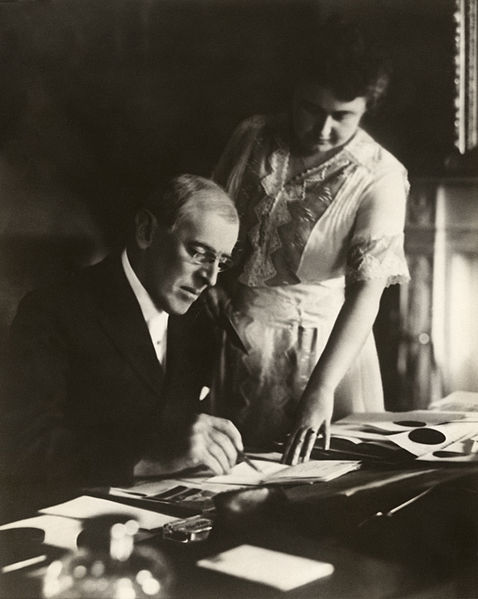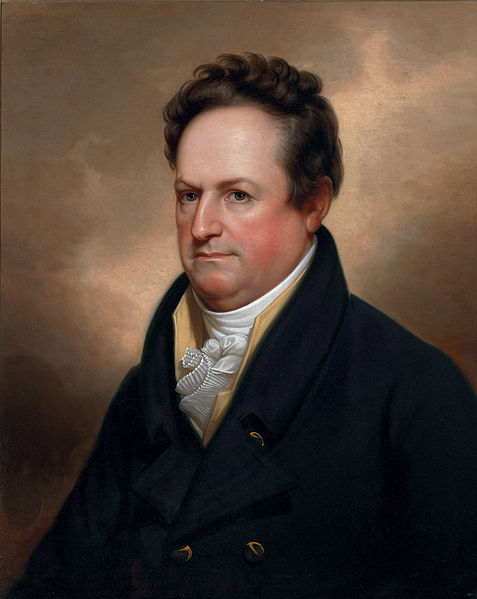Writing in the wake of the most bizarre election in modern American history, Seymour Morris Jr., an entrepreneur and amateur historian, examines how presidential candidates’ pre-election experiences translated into electoral success by focusing on fifteen candidates who ran between 1788 and 1980. Fit for the Presidency? Winners, Losers, What-Ifs, and Also-Rans is written with concision and eloquence, and in it Morris offers a wealth of anecdotes about some of the better known and many of the lesser known Americans who strove to assume the reins of the nation’s highest office.
Morris shines when he relates little-known details about some of America’s most famous individuals. He relates, for instance, how the influential Secretary of the Treasury and creator of the Federal Reserve, William McAdoo, dug his own grave years before his 1920 presidential bid because he had tried to end President Woodrow Wilson’s love affair with Edith Galt in order to avoid a public scandal. The attempt did not end well for McAdoo. Similarly, Morris tells us that Herbert Hoover, ever the efficient engineer, dropped the use of his middle name – Clark – in order to save time signing documents. Ronald Reagan, we learn, got passed over by the studio that produced the 1964 film The Best Man because he didn’t look presidential enough.
 |
| President Woodrow Wilson with his wife, Edith, in June 1920 |
Beyond engaging anecdotes, however, Fit for the Presidency? might leave the reader puzzled. Morris would have done well to offer a more transparent methodology and a more substantiated and better-structured thesis. He also could have immersed himself more deeply in at least some of the abundant historical literature on the history of American politics and political theory. At a basic level, it remains unclear how exactly Morris chose his case studies. Merely examining five actual presidents (Washington, William H. Harrison, Lincoln, Hoover, and Reagan) and ten candidates who failed to hit the mark, the author does not connect their success prior to the election with success after it. Hoover, after all, rated by Morris as an “excellent” candidate because of his personality and his impressive experience, is almost uniformly viewed by historians as among the worst presidents of the 20th century. Morris’s attempt to quantify and generalize about past presidents is arguably too simplistic and fraught with contradictions. Nor has he considered how the institution of the presidency itself has changed, making his comparisons something of an apples and oranges exercise.
Underneath the chirpy anecdotes and Quizzo trivia, Morris has an ideological ax to grind and his book is filled with omissions, semi-truths, over-generalizations, and inaccuracies. For example, praising Washington’s knack for running his plantations, Morris fails to mention even once the role that slaves played in creating Washington’s wealth. Morris further avers without a modicum of doubt or evidence that the victory of DeWitt Clinton in 1812 would have precluded the Civil War since Clinton opposed slavery on a moral level. Morris claims that the 1945 Yalta agreement revealed Franklin Roosevelt’s increasingly poor mental and physical health. Most serious historians would scoff at that. President Ford’s failure to get “re-elected” in 1976, in turn, supposedly constituted the first time since 1888 that an incumbent president did not return to the White House. In fact, Ford never got elected president or vice president. Incumbent presidents, moreover, also suffered defeat in 1892, 1912, and 1932.
 |
| DeWitt Clinton, 1823. Mayor of New York and one of the vissionaries of the Erie Canal. Per Morris, one of the most qualified presidential candidates to lose. |
Morris’s agenda is most apparent in his treatment of Robert Kennedy and Ronald Reagan. Morris claims – evidence? – that RFK was insincere when he “visited burned-out ghettoes to ensure that he would get 90 percent of the black vote.” Morris further contends that RFK’s generous fiscal plans merely reflected “pandering to the masses to get votes. Most people in America [in 1968] do not have problems: they have a job…they pay their bills. What does Kennedy have to say to these people?” Reagan, on the other hand, receives high marks for his policies. Not only was Reagan the only president since the 1960s to deal with the “entitlement crisis,” his Strategic Defense Initiative—that many historians have criticized for having jeopardized a series of peace talks— was a “most imaginative move.” To hear Morris tell the story, Reagan prevented nuclear war, was not directly involved in Iran-Contra, and won the Cold War, no matter what “liberal detractors” might say. Again, historians who have studied these questions would find most of this facile and jejune, if not downright silly.
Finally, Morris's “big idea” in this book is that common sense, cordiality, honesty and the ability to implement one’s political agenda constitute the recipe for success. Donald Trump, of course, represents exactly opposite of this formula – a hectoring, bullying, congenitally dishonest narcissist. This book was clearly timed to take advantage of the presidential election cycle, but one wonders how it explains Trump.
